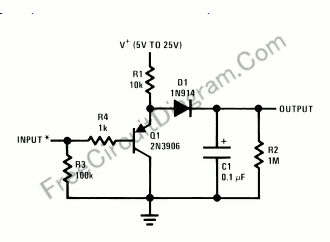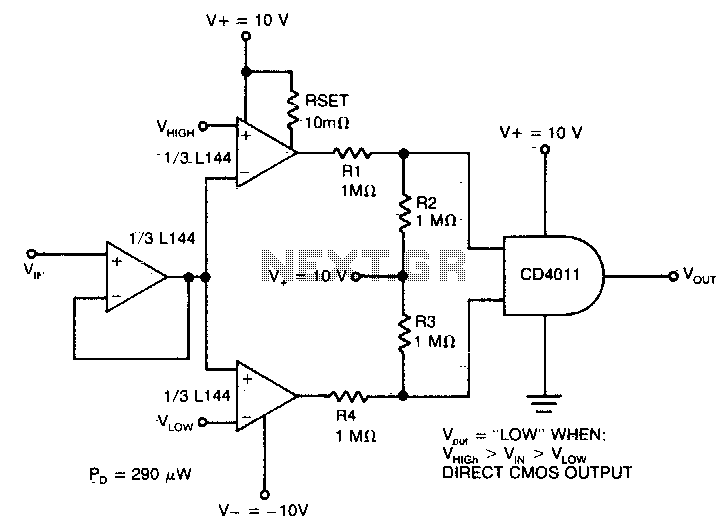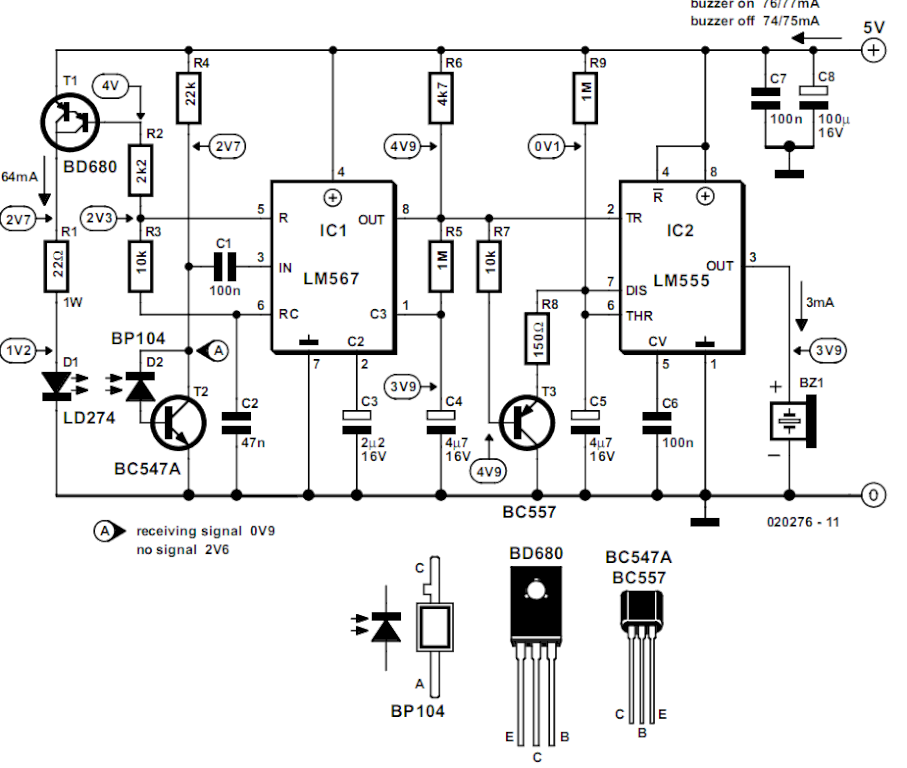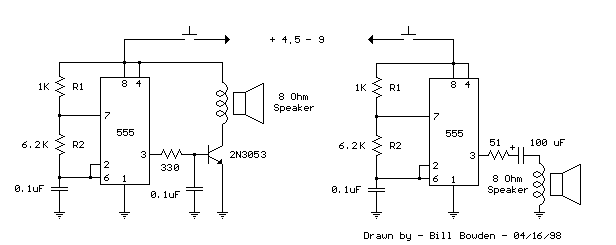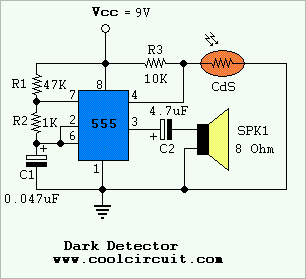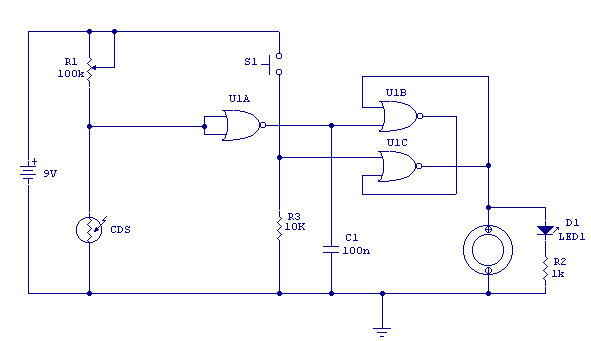
Peak detector
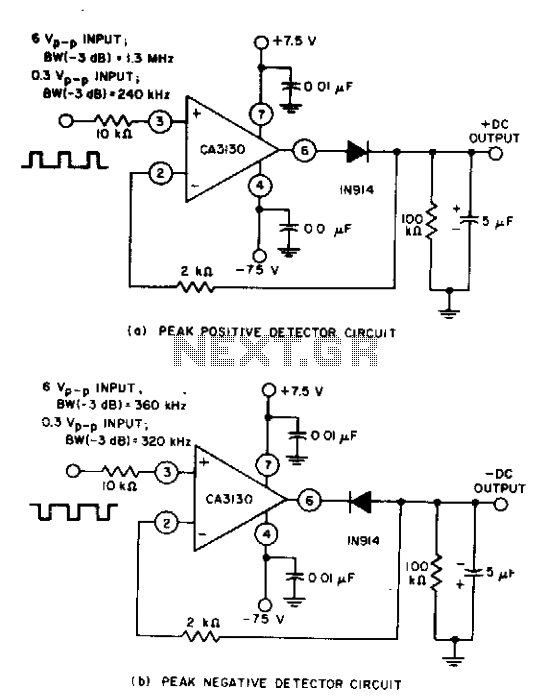
Circuits can be readily constructed using the CA3130 BiMOS operational amplifier. When dealing with large-signal inputs, the bandwidth of the peak-negative circuit is lower than that of the peak-positive circuit. The second stage of the CA3130 serves to limit bandwidth in this scenario.
The CA3130 BiMOS operational amplifier is a versatile component that combines the advantages of both bipolar and CMOS technologies. Its unique design allows it to operate effectively in a variety of applications, particularly in circuits requiring high-speed performance and low noise. The CA3130 is characterized by its ability to handle large-signal inputs, making it suitable for use in peak detection circuits, signal conditioning, and other high-frequency applications.
In a typical configuration involving peak detection, the peak-positive circuit utilizes the high bandwidth of the CA3130 to quickly respond to positive signal peaks. Conversely, the peak-negative circuit, while still functional, exhibits reduced bandwidth due to the inherent limitations imposed by the second stage of the amplifier. This reduction in bandwidth can affect the circuit's response time and accuracy in detecting negative signal peaks.
To optimize performance, careful consideration should be given to the design parameters of the circuit, including feedback components, input impedance, and power supply levels. The use of appropriate filtering techniques may also help mitigate bandwidth limitations, ensuring that the circuit can effectively handle the desired frequency range.
Overall, the CA3130 BiMOS op amp is a powerful tool for engineers looking to implement high-performance circuits, particularly in applications where signal integrity and response time are critical.Circuits are easily implemented using the CA3130 BiMOS op amp. For large-signal inputs the bandwidth of the peak-negative circuit is less than that of the peak-positive circuit. The second stage of the CA3130 limits bandwidth in this case.
The CA3130 BiMOS operational amplifier is a versatile component that combines the advantages of both bipolar and CMOS technologies. Its unique design allows it to operate effectively in a variety of applications, particularly in circuits requiring high-speed performance and low noise. The CA3130 is characterized by its ability to handle large-signal inputs, making it suitable for use in peak detection circuits, signal conditioning, and other high-frequency applications.
In a typical configuration involving peak detection, the peak-positive circuit utilizes the high bandwidth of the CA3130 to quickly respond to positive signal peaks. Conversely, the peak-negative circuit, while still functional, exhibits reduced bandwidth due to the inherent limitations imposed by the second stage of the amplifier. This reduction in bandwidth can affect the circuit's response time and accuracy in detecting negative signal peaks.
To optimize performance, careful consideration should be given to the design parameters of the circuit, including feedback components, input impedance, and power supply levels. The use of appropriate filtering techniques may also help mitigate bandwidth limitations, ensuring that the circuit can effectively handle the desired frequency range.
Overall, the CA3130 BiMOS op amp is a powerful tool for engineers looking to implement high-performance circuits, particularly in applications where signal integrity and response time are critical.Circuits are easily implemented using the CA3130 BiMOS op amp. For large-signal inputs the bandwidth of the peak-negative circuit is less than that of the peak-positive circuit. The second stage of the CA3130 limits bandwidth in this case.
